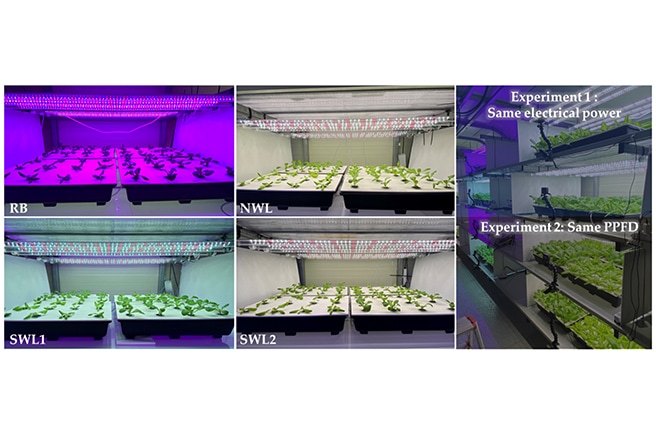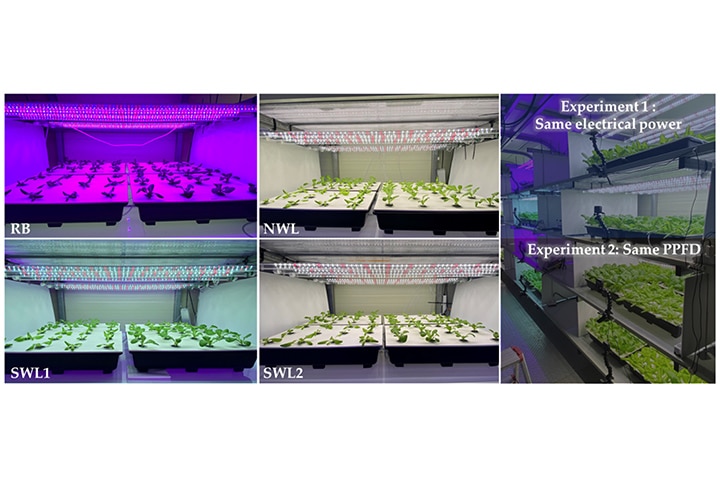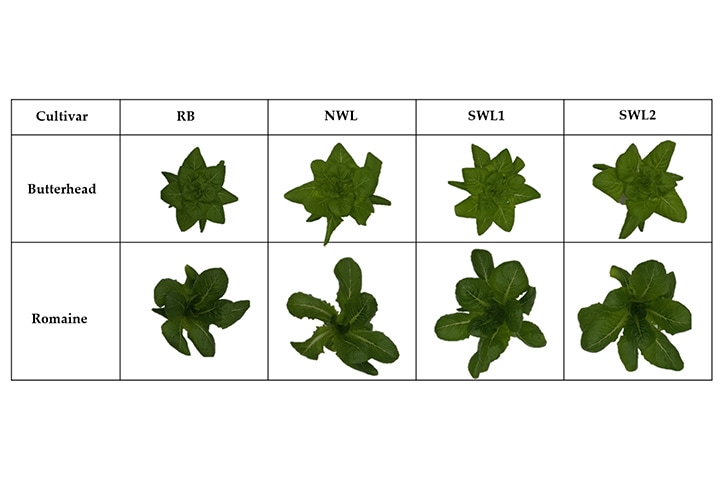Effects of White LED Lighting with Specific Shorter Blue and/or Green Wavelength on the Growth and Quality of Two Lettuce Cultivars in a Vertical Farming System

Thi Kim Loan Nguyen 1,†, Kye Man Cho 2,†, Hee Yul Lee 2, Du Yong Cho 2, Ga Oun Lee 1, Seong Nam Jang 1, Yongki Lee 3, Daesup Kim 4 and Ki-Ho Son 1
1 Department of Horticultural Science, Gyeongsang National University
2 Department of Food Science, Gyeongsang National University
3 Lighting Marketing Group, Samsung Electronics
4 Lighting/Automotive Development Group, Samsung Electronics
† These authors contributed equally to this work.
White (W) light-emitting diode (LED) light has been used as an efficient light source for commercial plant cultivation in vertical farming. This study aimed to examine the effect of W LED light sources on the growth and quality of butterhead and romaine lettuce. Three W LED light sources including normal W light (NWL) which has 450 nm as its pumping wavelength and two specific W lights (SWL1 and SWL2) with shorter blue peak wavelength (437 nm) were used to grow lettuce in comparison to a red (R) and blue (B) LED combination.

As a result, SWL1 and SWL2 treatments with the same electrical power or photosynthetic photon flux density (PPFD) resulted in more growth of both lettuce cultivars compared to RB treatment. Some phenolic and flavonol contents were increased in the RB treatment, whereas SWL2 treatment stimulated the accumulation of other phenolic and flavonol compounds. Meanwhile, neither NWL nor SWL1 treatments increased the individual phenolic and flavonol contents in either cultivar (except for some flavonols in romaine lettuce in the SWL1 group). In addition, light and energy use efficiencies were also highest in the SWL1 and SWL2 treatments. These results illustrate the positive effects of specific W LED light on lettuce growth and quality, and suggest that the specific W LED light sources, especially SWL2, could be preferably used in vertical farming.



 Copyright ⓒ 1995-2023 SAMSUNG All Rights reserved.
Copyright ⓒ 1995-2023 SAMSUNG All Rights reserved.